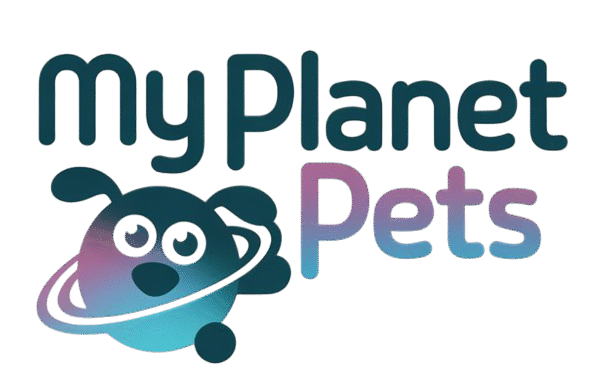The Ultimate Guide to Dog Food: Choosing the Best Nutrition for Every Life Stage

The Complete Guide to Dog Food: Nutrition, Types, and Feeding for Optimal Canine Health
Proper nutrition is one of the most important factors in maintaining your dog’s health, longevity, and quality of life. With the wide variety of dog food products on the market, choosing the right food can feel overwhelming. This guide provides a professional, in-depth look at canine nutrition, the different types of dog food available, and how to select the best diet for your dog’s specific needs.
1. Understanding Canine Nutritional Needs
Dogs are omnivores, which means they can eat a variety of food sources, including meat, vegetables, and grains. However, this doesn’t mean that all foods are appropriate or beneficial. A balanced diet for a dog includes:
- Proteins: Essential for muscle maintenance, immune function, and tissue repair. High-quality animal proteins (chicken, beef, lamb, fish) are typically best.
- Fats: Provide energy, promote healthy skin and coat, and support cell function. Look for healthy sources like chicken fat or fish oil.
- Carbohydrates: Supply energy and dietary fiber, which aids digestion. Grains like brown rice and oats or legumes like peas are common.
- Vitamins and Minerals: Important for bone health, immune response, nerve function, and other processes. Balanced dog foods should contain essential micronutrients like calcium, phosphorus, and vitamin D.
- Water: Dogs need constant access to fresh water. Even with wet food, hydration remains crucial.
A complete and balanced dog food will provide all the necessary nutrients in the proper proportions, typically indicated by an AAFCO (Association of American Feed Control Officials) statement on the label.
2. Types of Dog Food
Dog food comes in several forms, each with unique benefits and drawbacks. The most appropriate type depends on your dog’s age, health, activity level, and your lifestyle.
Dry Dog Food (Kibble)
- Advantages: Convenient, cost-effective, long shelf life, and can help clean teeth through chewing.
- Considerations: Must be high in quality to avoid fillers and artificial additives. Dogs with dental problems may struggle with harder kibble.
Wet Dog Food (Canned)
- Advantages: More palatable, higher moisture content (ideal for hydration), and easier to chew for older dogs or those with dental issues.
- Considerations: More expensive than dry food, and opened cans must be refrigerated.
Raw Diets
- Advantages: Mimics the ancestral diet; proponents claim it leads to improved coat, energy, and digestion.
- Considerations: Risk of bacterial contamination (salmonella, E. coli), nutrient imbalance, and safety concerns if not properly prepared. Always consult a vet before starting a raw diet.
Home-Cooked Meals
- Advantages: Full control over ingredients, good for dogs with allergies or sensitivities.
- Considerations: Requires careful planning to ensure nutritional balance. Consult a veterinary nutritionist to avoid deficiencies.
Freeze-Dried or Dehydrated Food
- Advantages: Preserves nutrients and flavor while offering convenience. Typically high in protein and lower in additives.
- Considerations: Expensive and needs rehydration before serving.
3. Feeding According to Life Stage and Size
Dogs have different dietary needs depending on their life stage and size. Feeding them appropriately ensures proper growth, maintenance, and longevity.
Puppies (0–12 months)
- Require higher calories, protein, and fat to support growth.
- Large-breed puppies need controlled calcium and calorie levels to prevent joint problems.
- Feed a high-quality puppy formula 3–4 times daily.
Adult Dogs (1–7 years)
- Maintenance diets should balance protein and fat to sustain energy without promoting obesity.
- Portion control and regular feeding schedules help avoid weight gain.
Senior Dogs (7+ years)
- Older dogs benefit from diets lower in calories but rich in joint-supporting nutrients like glucosamine and omega-3 fatty acids.
- Easy-to-digest ingredients and added fiber support gastrointestinal health.
Small vs. Large Breeds
- Small dogs have faster metabolisms and may need calorie-dense food in smaller portions.
- Large and giant breeds benefit from joint-supportive nutrients and formulas that prevent rapid weight gain.
4. Reading Dog Food Labels
Choosing the right food starts with reading and understanding the product label. Key components include:
- Ingredient List: Ingredients are listed in descending order by weight. Look for named protein sources (“chicken,” “beef,” etc.) rather than generic terms like “meat meal.”
- Guaranteed Analysis: Lists minimum percentages of protein and fat, and maximum percentages of fiber and moisture.
- Nutritional Adequacy Statement: Indicates whether the food meets AAFCO standards for a complete and balanced diet, and for which life stage (e.g., “for growth” or “for maintenance”).
- Feeding Guidelines: Offer a starting point, but you may need to adjust based on your dog’s age, activity level, and weight.
5. Special Diets and Health Conditions
Some dogs require therapeutic diets for specific medical conditions. These should be prescribed and monitored by a veterinarian.
- Allergies or Sensitivities: Hypoallergenic or limited-ingredient diets help identify and avoid triggers such as chicken, beef, dairy, or grains.
- Obesity: Weight management formulas have fewer calories and higher fiber to help dogs feel full.
- Kidney Disease: Renal diets restrict phosphorus and contain moderate protein levels to reduce strain on the kidneys.
- Diabetes: Require high-fiber, low-glycemic diets to manage blood sugar.
- Joint Problems: Foods with glucosamine, chondroitin, and EPA/DHA (omega-3 fatty acids) help reduce inflammation and support mobility.
6. Feeding Guidelines and Practices
Feeding your dog properly involves more than just selecting good food—it’s also about how and when you feed them.
- Portion Control: Use the feeding guidelines as a base, but monitor your dog’s weight and adjust as necessary.
- Meal Timing: Most adult dogs do well with two meals a day. Puppies may need three or more.
- Avoid Table Scraps: Human food can cause gastrointestinal upset or toxicity. Avoid onions, chocolate, grapes, and fatty leftovers.
- Treats: Keep treats to no more than 10% of the dog’s daily caloric intake.
- Transitioning Foods: When changing diets, do so gradually over 5–7 days to avoid digestive issues.
7. Choosing the Right Dog Food Brand
There are hundreds of dog food brands, but not all are created equal. When evaluating brands, consider:
- Company Reputation: Established brands with veterinary nutritionists on staff and strong safety records are preferable.
- Transparency: Brands that clearly disclose ingredient sources and manufacturing practices are more trustworthy.
- Third-Party Testing: Quality control and nutritional analysis by independent labs can confirm product claims.
Look for brands that follow WSAVA (World Small Animal Veterinary Association) guidelines and are recommended by veterinarians.
Conclusion
Feeding your dog a balanced, nutritious diet is one of the most important responsibilities of pet ownership. Understanding the nutritional needs of your dog, how to read food labels, and what types of diets are most appropriate for their life stage and health condition ensures that your companion thrives. By making informed decisions and consulting your veterinarian, you can support your dog’s health, vitality, and happiness for years to come.
